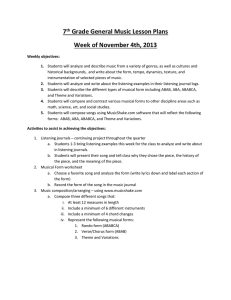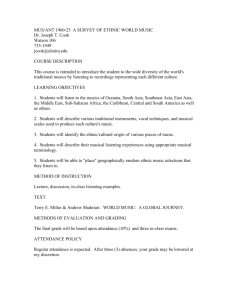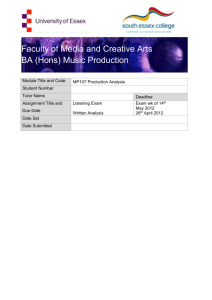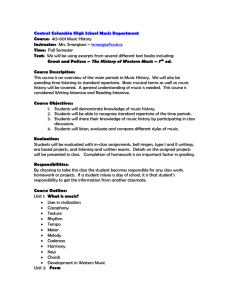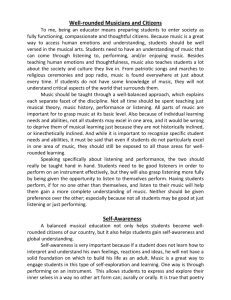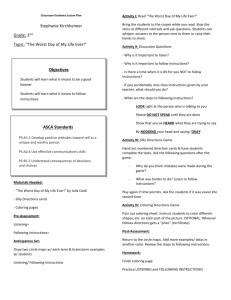Listening And Attention Skill Building
advertisement
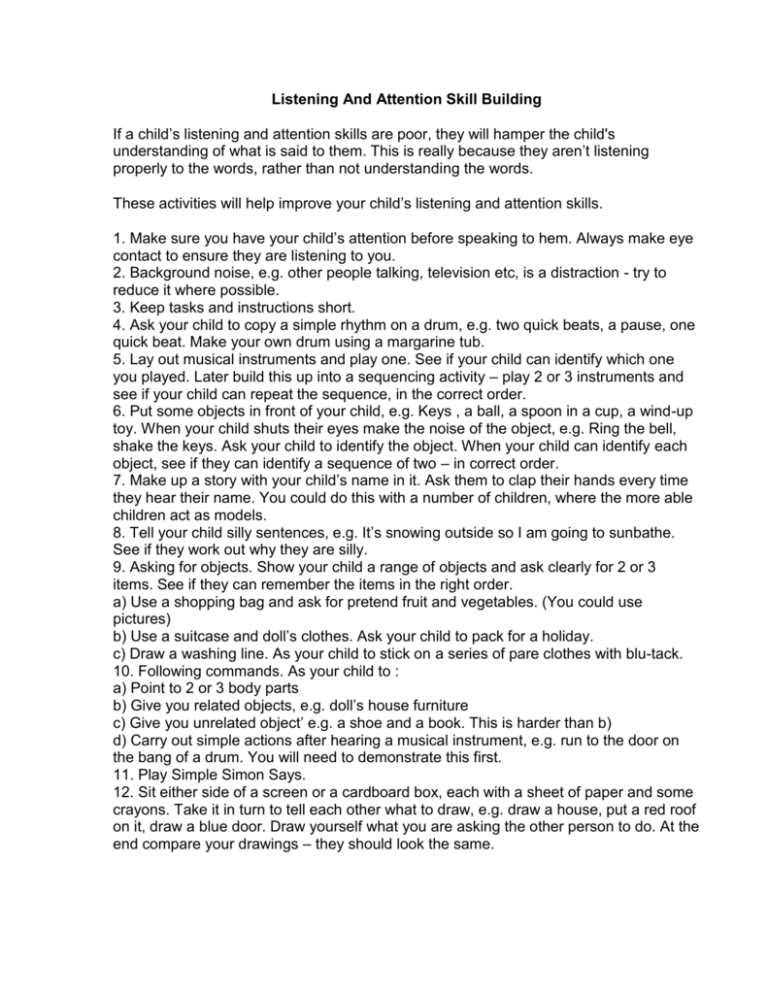
Listening And Attention Skill Building If a child’s listening and attention skills are poor, they will hamper the child's understanding of what is said to them. This is really because they aren’t listening properly to the words, rather than not understanding the words. These activities will help improve your child’s listening and attention skills. 1. Make sure you have your child’s attention before speaking to hem. Always make eye contact to ensure they are listening to you. 2. Background noise, e.g. other people talking, television etc, is a distraction - try to reduce it where possible. 3. Keep tasks and instructions short. 4. Ask your child to copy a simple rhythm on a drum, e.g. two quick beats, a pause, one quick beat. Make your own drum using a margarine tub. 5. Lay out musical instruments and play one. See if your child can identify which one you played. Later build this up into a sequencing activity – play 2 or 3 instruments and see if your child can repeat the sequence, in the correct order. 6. Put some objects in front of your child, e.g. Keys , a ball, a spoon in a cup, a wind-up toy. When your child shuts their eyes make the noise of the object, e.g. Ring the bell, shake the keys. Ask your child to identify the object. When your child can identify each object, see if they can identify a sequence of two – in correct order. 7. Make up a story with your child’s name in it. Ask them to clap their hands every time they hear their name. You could do this with a number of children, where the more able children act as models. 8. Tell your child silly sentences, e.g. It’s snowing outside so I am going to sunbathe. See if they work out why they are silly. 9. Asking for objects. Show your child a range of objects and ask clearly for 2 or 3 items. See if they can remember the items in the right order. a) Use a shopping bag and ask for pretend fruit and vegetables. (You could use pictures) b) Use a suitcase and doll’s clothes. Ask your child to pack for a holiday. c) Draw a washing line. As your child to stick on a series of pare clothes with blu-tack. 10. Following commands. As your child to : a) Point to 2 or 3 body parts b) Give you related objects, e.g. doll’s house furniture c) Give you unrelated object’ e.g. a shoe and a book. This is harder than b) d) Carry out simple actions after hearing a musical instrument, e.g. run to the door on the bang of a drum. You will need to demonstrate this first. 11. Play Simple Simon Says. 12. Sit either side of a screen or a cardboard box, each with a sheet of paper and some crayons. Take it in turn to tell each other what to draw, e.g. draw a house, put a red roof on it, draw a blue door. Draw yourself what you are asking the other person to do. At the end compare your drawings – they should look the same.





